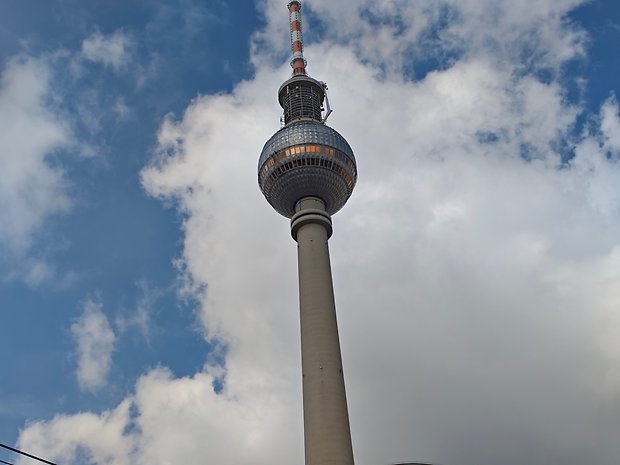Poco F6 Review: Flagship Performance for Mid-Range Money


Poco launched its 2024 Poco F6 smartphone line with bold claims of "HyperPower Evolved". The Android phone packs a new Qualcomm chip, with promising hardware specifications, and upgrades to the display and charging. We were pleasantly surprised by the performance offered by the previous Poco F5, but can the brand strike that price-performance balance once again one year later? Let's find out in our Poco F6 review.
Good
- Great performance
- Improved software update policy
- Good battery life
- Fast charger included
Bad
- Bloatware
- Average camera performance
- No microSD support or headphone jack
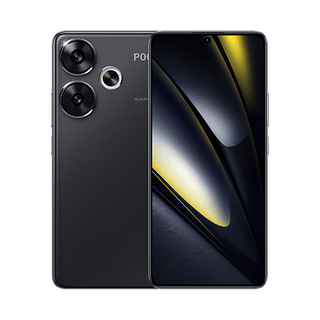
In a nutshell
The Poco F6 was announced on May 13th, 2024, after a long teasing campaign. It is based on the Chinese-exclusive Redmi Turbo 3 and is positioned as a "Performance Flagship" by Poco. In practice, that means that the company designed the phone with a performance priority with minor compromises elsewhere, mainly in the camera department.
Like the F5 before it, the Poco F6 debuts a Qualcomm chip: this time the Snapdragon 8s Gen 3, the CPU designer positions the CPU at a higher tier, suggesting better performance, something that we found out was true, and we have the numbers to share below.
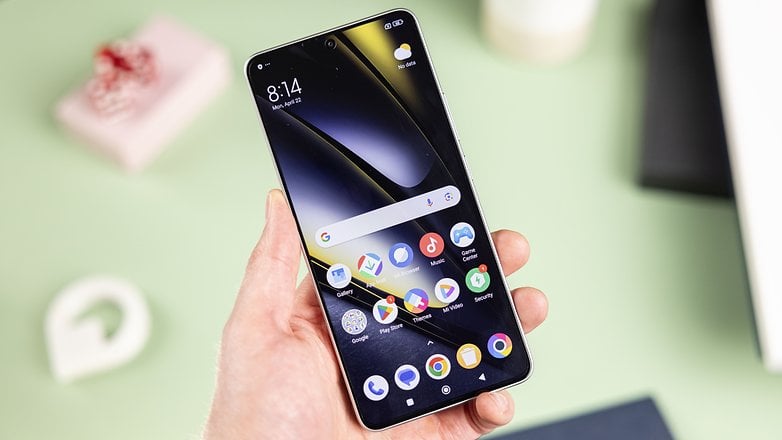
The Poco F6 improves on last year's F5 by upping the screen resolution from 1080p+ to 2712×1220, faster charging at 90 W, and promising an extra year of system upgrades and security updates.
Poco should already have the Poco F6 for sale on its online store starting at 450€ for the 8+256 GB model, with the 12+512 GB option starting at a 499,99€ MSRP. Early birds can save by pre-ordering, taking the price to 389,90€ and 419,90€ respectively.
As with past Poco/Xiaomi launches, the Poco F6 is not expected to be sold officially in North America, but we expect to see third-party sellers offering the phone on the usual online marketplaces.
Design and Display
The big 6.67'' OLED display takes center stage once again on the Poco F6. This time, however, Poco equipped the phone with a brighter, higher-resolution panel at the same 120 Hz refresh rate. Design-wise, the new phone offers a pleasant, more subtle style, without the shiny (and fingerprint-prone surface) of its predecessor. On the negative side, however, gone is the headphone jack. We lost another one, boys and girls.
Pros:
- Thin and light build.
- Bright and high-resolution OLED screen.
- Thin bezels.
- Subjectively pretty.
Cons:
- Only IP64 water splash resistance.
- No expandable memory.
- No headphone jack.
Not one to skip a trend, Poco sent us the review sample in the "Titanium" color. Jokes aside, we liked the plastic finish, which not only had a discreet shine, but didn't get fingerprints. The company will also sell the phone in black and green finishes, so Western audiences will have to live without the white and Harry Potter (???) options, at least for now.
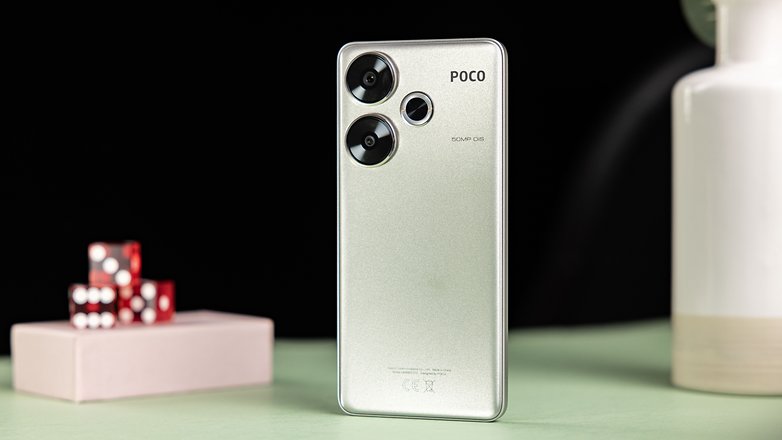
The Poco F6 kept the thin and compact design of its predecessor, with a premium finish on the sides. The fingerprint reader moved from the power button to the display, and all buttons are placed in convenient positions on the left side. The top houses the traditional IR blaster, speaker, and microphone, and the bottom has the other speaker, USB-C port, and dual SIM tray, while the left side is clean. The headphone jack found in the F5 is gone on the Poco F6.
Like its predecessor, the Poco F6 features thin bezels on the front around the big 6.67-inch OLED display, which still refreshes at 120 Hz for smooth animations. The resolution got a bump to 2712 × 1220, which is always a welcome change, but an even bigger upgrade can be found in the peak brightness which (in true 2024 fashion) now reaches 4000 nits. Which may explain why the brand chose to present the phone on the sandy dunes of Dubai.
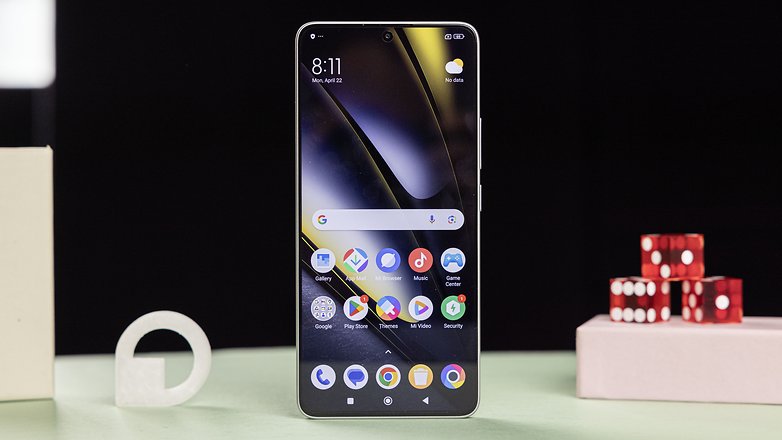
To round up this section, the display is covered by Gorilla Glass Victus, and the ingress resistance got a small upgrade between the Poco F5 and F6, going from IP53 to IP64.
Performance and Software
Powered by the new Snapdragon 8s Gen 3 processor, the Poco F3 features 8 or 12 GB of fast LPDDR5x RAM and 256 or 512 GB of similarly fast UFS 4.0 storage. That results in snappy performance for both daily tasks and gaming, with support for all the cutting edge features and effects available on the Android ecossystem
Pros:
- Flagship-like and stable performance.
- Improved software update policy.
Cons:
- Lots of bloatware.
We were impressed by last year's Snapdragon 7+ Gen 2 on the Poco F5, and for the 8s Gen 3, Qualcomm did an overall upgrade, with more modern and faster CPU cores, while adopting a similar GPU to the one used on the Snapdragon 8 Gen 2. That improvement had a small side-effect we will cover later, but the important thing is that if you are in the market for a fast phone that doesn't brake the bank, the Poco F6 should be on your watch list.
| Poco F6 (Snapdragon 8s Gen 3) |
Google Pixel 8a (Tensor G3) |
Xiaomi 14 Ultra (Snapdragon 8 Gen 3) |
Poco F5 (Snapdragon 7+ Gen 2) |
OnePlus 12R (Snapdragon 8 Gen 2) |
Redmi Note 13 Pro 5G (Snapdragon 7s Gen 2) |
Nothing Phone (2a) (Dimensity 7200) |
|
|---|---|---|---|---|---|---|---|
| AnTuTu | 1,455,312 | 1,153,512 | 1,939,484 | n/a | n/a | 593,863 | 688,613 |
| 3DMark Wild Life Extreme Stress Test |
Best loop: 3140 Worst loop: 2584 Stability: 82.3% |
Best loop: 2437 Worst loop: 1667 Stability: 68.5% |
Best loop: 4708 Worst loop: 3606 Stability: 76.6% |
Best loop: 1979 Worst loop: 1974 Stability: 99.7% |
Best loop: 3660 Worst loop: 2462 Stability: 99.7% |
Best loop: 800 Worst loop: 763 Stability: 95.4% |
Best loop: 1153 Worst loop: 1148 Stability: 99.5% |
| Geekbench 6 | Single: 1953 Multi: 4930 |
Single: 1688 Multi: 4362 |
Single: 1828 Multi: 6317 |
Single: 1107 Multi: 4232 |
Single: 1561 Multi: 5142 |
Single: 889 Multi: 2523 |
Single: 1148 Multi: 2589 |
For non-gaming apps, single-threaded performance is almost double what the Poco F5 offered, which explains the snappy performance around the interface, when opening apps, and quick effects processing. For multi-threaded tasks, with lots of simultaneous demanding processing, the Poco F6 also outperforms its predecessor, but by a smaller 15% margin.
The numbers cannot match 2024's flagships powered by the Snapdragon 8 Gen 3 chip, but easily trade blows with the Snapdragon 8 Gen 2 generation: The 8s Gen 3 easily wins in single-thread performance, but slightly loses in multi-thread. The result is a very strong contender for the sub $600/600€ market.

In gaming, the jump in performance for the Poco F6 over its predecessor is close to 50%. Which translates into more FPS and/or better image quality. The F6 doesn't offer the near-perfect consistency in performance as the Poco F5, but the worst-case scenarios simulated by the 3D Mark stress test still returned better performance for the Poco F6 than the F5 at its best.
When compared to 2023's flagships, the Poco F6's Snapdragon 8s Gen 3 offered slightly lower peak performance, but better worst-case performance than the OnePlus 12R powered by 2023's Snapdragon 8 Gen 2. In practice, the more consistent performance on the Poco F6 means lower performance drops in the (figurative) heat of a gaming session.
Software
First, the good news. We have long criticized Poco's update policy of only two Android upgrades and three years of security updates. For the Poco F6 phones, the company extended both scenarios for a year, which means three Android upgrades and four years of security updates. The improvement mirrors similar steps parent company Xiaomi has made to better support its customers.
We should note that both Samsung and Google still offer longer support for their phones in the same price range. But Poco (and Xiaomi) should be praised for also improving their update game. And the Poco F6 easily outperforms all phones the two companies offer in the same price range.

One thing that didn't change, on the other hand, is the amount of third-party apps pre-installed on the Poco F6. Like its predecessor, the phone comes with 18 apps that can be considered bloatware. Some will argue that this or that particular app is useful, but it doesn't change the fact that it should have been optional. In the end, that helped inflate the used storage after a clean install with all apps updated resulting in 36.4 GB of used space from the get-go.
Camera
The camera section is where we usually find the Poco F line weak points. The Poco F6 tries to break away from the pattern, but still underperforms when compared to the Samsung or Google direct rivals. The main 50-megapixel sensor is better at capturing light than the previous F5, and that resulted in very usable results, day or night. The ultra-wide camera was mostly ok during the day, and the macro... wait, there is no useless macro camera this time around!
Pros:
- Good daylight and night pictures from the main camera.
- Good choices from the automatic mode.
- No useless macro camera (yes, that is a Pro).
Cons:
- Beauty effect on selfies by default.
The 50 MP Sony IMX882 may not be a flagship-level camera sensor, but for a $450/450€ it showed competitive performance. The camera kit is completed by an 8 MP ultra-wide lens and the selfie camera with 20-megapixels.
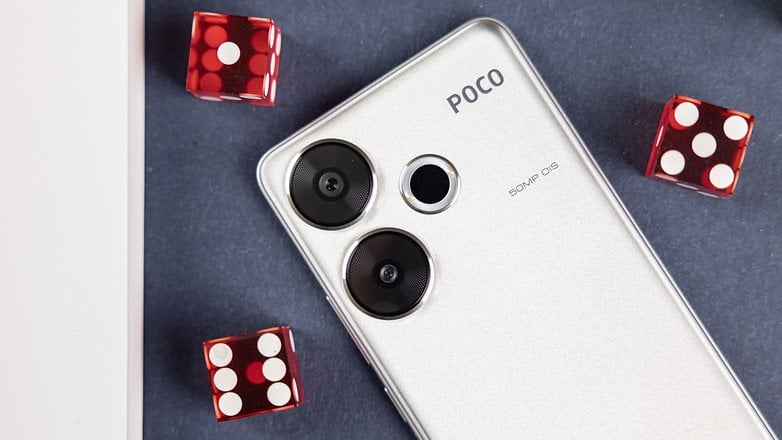
The main camera performed well in our shoots, with a good level of detail and realistic color reproduction. Not having a telephoto lens, users will have to resort to the digital zoom (or walking forward) for closer shots. And the results were good up to 4x magnification if you are going to see the photo on screen or share it over an app.
Night photos probably showed the most improvement with the new sensor, with good results in the automatic mode, which can take slightly longer exposures to compensate for low lightning. The ultra-wide camera didn't perform as well during the night, with slightly blurry results. During the day the ultra-wide lens was better, although with a small drop in sharpness and, of course, resolution.
As we mentioned, there is no macro camera, and we actually compliment Poco/Xiaomi on that. Not only were macro pictures mostly useless, but the macro mode was also hidden in the camera app, which treated macros as a second (or third) class feature.
As for selfies, the Poco F6 had beauty effects on by default, which had the usual result of noticeably shiny and hazy skins. Turn the effect off, and you will get good results from the 20-megapixel cameras, for better or worse. Portrait mode worked well, with a good separation between subject and background, as long as you keep your hair tidier than mine in the test photos.
Battery
The Poco F6 doesn't offer the same fast 120 W charging found in the Poco F6 Pro, but its 90 W charging is still an improvement over the Poco F5. As with other Poco phones, the required charger is included, and the good news doesn't stop there, as the 5000 mAh battery offered good run times.
Pros:
- Fast charging.
- Includes a charger.
- Good battery life.
Cons:
- -
In practice, we didn't find that the 90 W charger on the Poco F6 really improved things over the 67 W adapter on the Poco F5. But charging times were already fast enough on that model, so the F6 will still be faster than the Motorolas and Samsungs it competes with.
When it comes to the battery life, we noticed the Poco F6 was not as good as the Poco F5. The additional processing power may be to blame here, as it didn't have the same impressive results both in real life and in the PC Mark Battery test.
| Charging | Poco F6 | Google Pixel 8a | Poco F5 | Galaxy A55 | Redmi Note 13 Pro 5G |
|---|---|---|---|---|---|
| 5 minutes |
|
|
|
|
|
| 10 minutes |
|
|
|
|
|
| 20 minutes |
|
|
|
|
|
| 30 minutes |
|
|
|
|
|
| 1 hour |
|
|
|
|
|
| Full charge |
|
|
|
|
|
| PC Mark Battery test |
|
|
|
|
|
On the PC Mark benchmark simulating real-world usage and measuring the time from when the charge dropped from 80% to 20%, the Poco F6 lasted around two fewer hours than its predecessor. The performance score, on the other hand, was roughly 10% higher as a sort of consolation prize.
You can expect better than one day of battery life with regular usage, but we aren't as confident to declare the Poco F6 a "two-day battery life" phone as its predecessor. Using the Battery saver mode can probably get the F6 there, and there is even an "Ultra battery saver" option for long stays away from the power socket.

Speaking of power outlets, that is the only method for charging the Poco F6 as wireless charging is not available. We mentioned last year that it is not a common feature in the price category. That is starting to change, but most models still lack the wireless charging feature in this category.
Key Features
| Poco F6 | |
|---|---|
| Display |
|
| SoC |
|
| Memory |
|
| OS |
|
| Camera |
|
| Selfie Camera |
|
| Battery |
|
| Connectivity |
|
| IP Certification |
|
| Dimensions and weight |
|
| Other points that may interest the nextpit community:
|
|
Conclusion
The Poco F6 blurs the line between the mid-range and flagship phones. But that is not really a new thing for the series, ever since the fan favorite Poco F1 we reviewed almost six years ago, the brand has managed to deliver on the "flagship-killer" formula again and again—even if it had to skip a year or two to get the right balance of performance and price.
We were impressed by Poco's execution on the F5, which got 4.5 stars on nextpit's review last year. And while the Poco F6 doesn't pack the same consistent performance in games or excellent battery life, it more than compensates for that in performance, both in general apps and games, especially the latter.
Considering the other improvements in display resolution and brightness, battery charging, camera, and especially software support, it is easy to recommend the phone to anyone who wants a balanced phone but still prioritizes performance, especially in games.
We still wish Poco didn't have to add so many third-party apps, but if that is the price to pay for the good package offered by the Poco F6, we will gladly take it, just keep that in mind when shopping.








